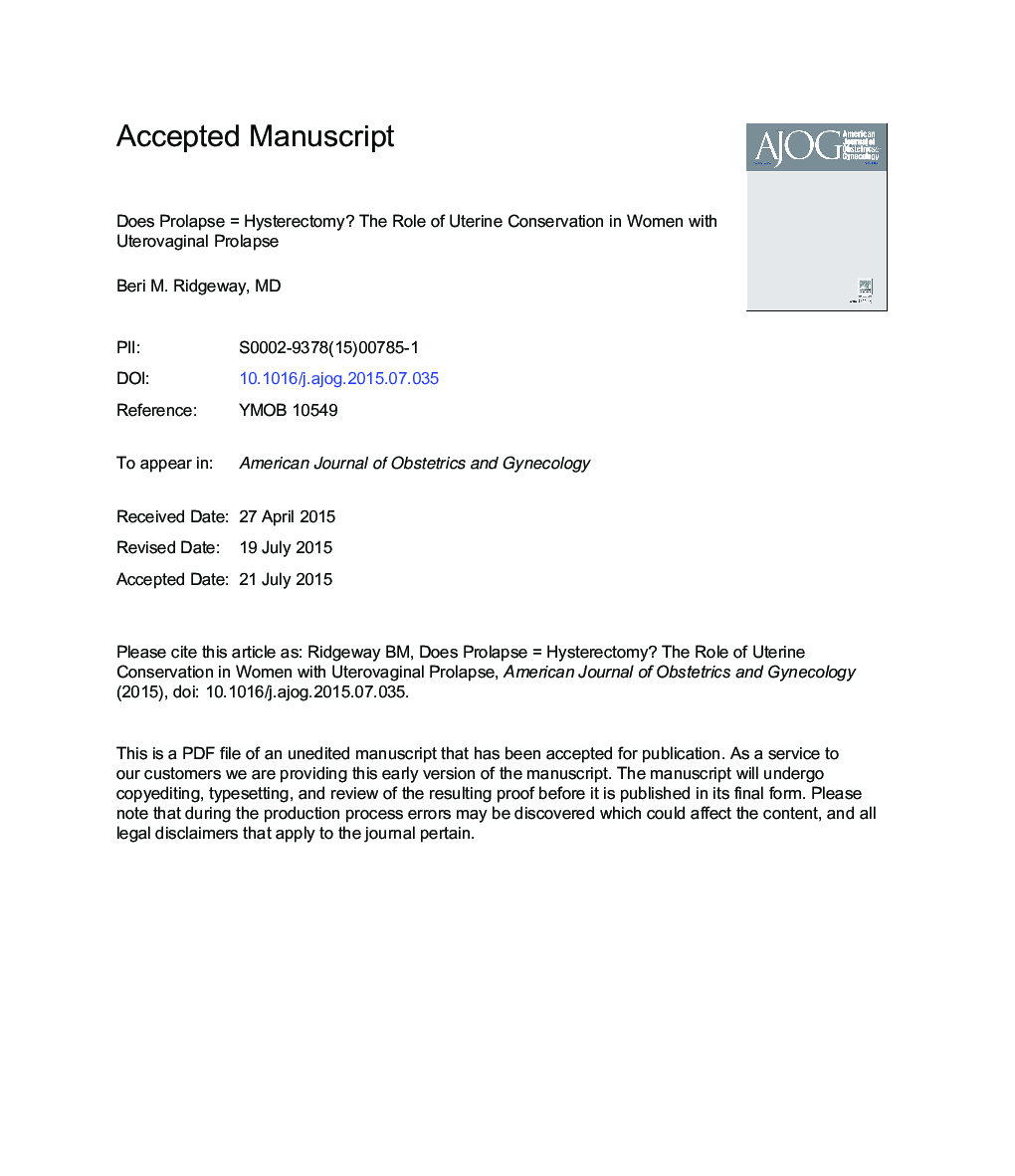| Article ID | Journal | Published Year | Pages | File Type |
|---|---|---|---|---|
| 6143843 | American Journal of Obstetrics and Gynecology | 2015 | 29 Pages |
Abstract
Hysterectomy has historically been a mainstay in the surgical treatment of uterovaginal prolapse, even in cases in which the removal of the uterus is not indicated. However, uterine-sparing procedures have a long history and are now becoming more popular. Whereas research on these operations is underway, hysteropexy for the treatment of prolapse is not as well studied as hysterectomy-based repairs. Compared with hysterectomy and prolapse repair, hysteropexy is associated with a shorter operative time, less blood loss, and a faster return to work. Other advantages include maintenance of fertility, natural timing of menopause, and patient preference. Disadvantages include the lack of long-term prolapse repair outcomes and the need to continue surveillance for gynecological cancers. Although the rate of unanticipated abnormal pathology in this population is low, women who have uterine abnormalities or postmenopausal bleeding are not good candidates for uterine-sparing procedures. The most studied approaches to hysteropexy are the vaginal sacrospinous ligament hysteropexy and the abdominal sacrohysteropexy, which have similar objective and subjective prolapse outcomes compared with hysterectomy and apical suspension. Pregnancy and delivery have been documented after vaginal and abdominal hysteropexy approaches, although very little is known about outcomes following parturition. Uterine-sparing procedures require more research but remain an acceptable option for most patients with uterovaginal prolapse after a balanced and unbiased discussion reviewing the advantages and disadvantages of this approach.
Related Topics
Health Sciences
Medicine and Dentistry
Medicine and Dentistry (General)
Authors
Beri M. MD,
